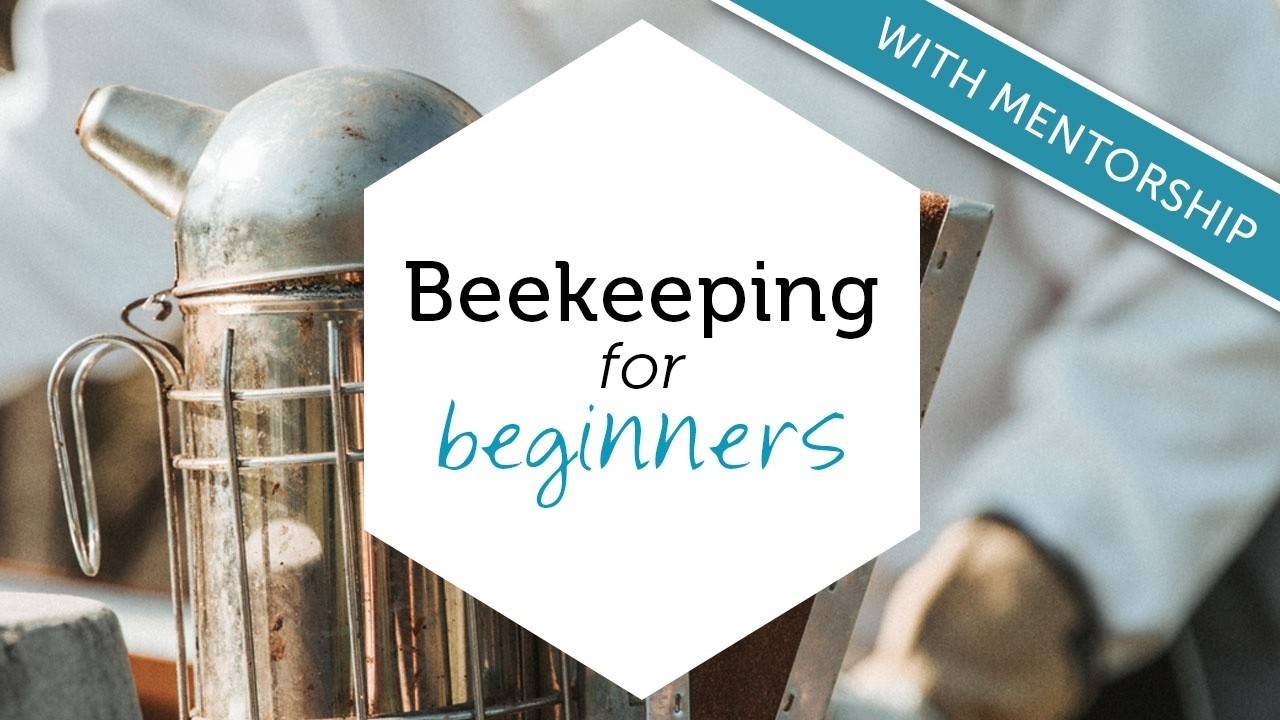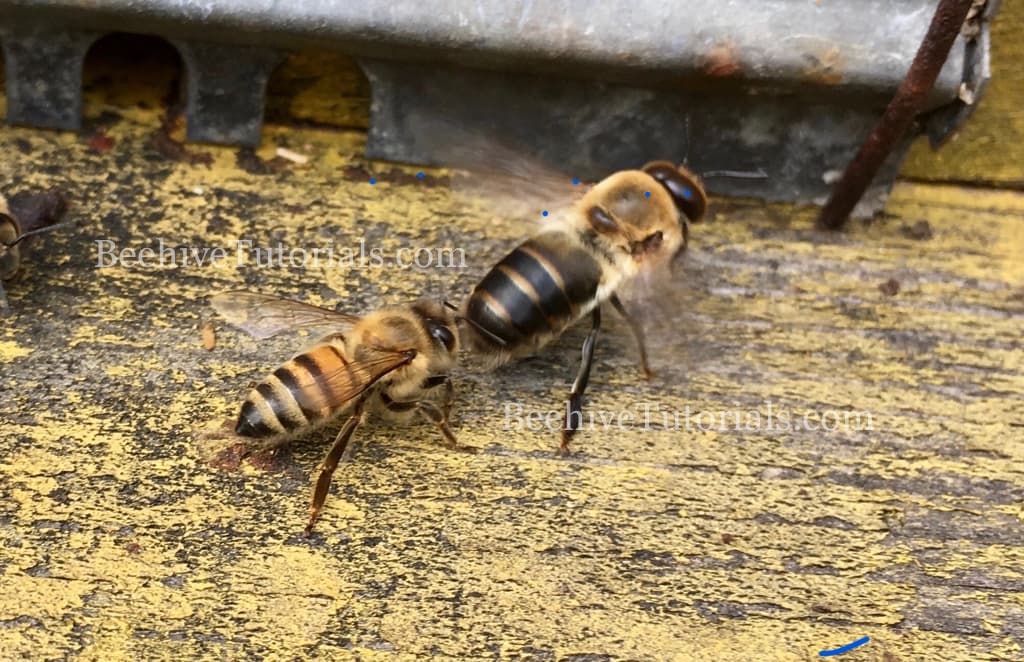Bees instinctively feel winter approaching and at the end of the summer they intensively start preparing for the cold days.
Queen bee
In most areas, queens slowly start reducing laying eggs in the fall right to the point when they stop completely.
During the winter there is no brood, up until the end of winter (usually until January-February on the north hemisphere) when the queens once again start laying eggs – at the beginning only few eggs and with the spring and warmer weather approaching, they lay more and more eggs.
Advertisement :

Beekeeping for Beginners
Everything you need to know!
This is a full beekeeping course for beginners.
Depending on the climate, in the warmer areas the queen will only reduce laying but she won't stop all together.
Brood reduction in the fall
If, at the end of the summer or in fall, you notice that there is less brood in the hive surrounded with honey, there is nothing to be worried about. It is a sign that bees are preparing for winter – the queen is reducing the laying and bees fill in the cells with honey supplies for winter.
Frames filled with honey and pollen, and small brood in the fall do not indicate that the queen is bad or blocked with honey - this is a normal process of the colony preparing for the upcoming winter.
You shouldn't move the frames in an attempt to provide a space for the queen to lay eggs, because by doing this you would only disrupt the bees and they would have to organize things again – they know the best how to organize their own nest for the winter.
Drones
At the end of summer and in the fall the worker bees throw out the drones from the hive and the queen stops laying unfertilized drone eggs. This is done in order to save as much food supplies as possible for the winter. Until spring the colony won't be needing them. Keeping the drones during the winter would only be a waste of precious food supplies.

There isn't a specific time for drone eviction, this depends on the weather conditions, honey flow, food supplies, colony strength etc. Time for eviction varies from place to place but also from year to year at the same location, and from colony to colony as well.
If there is a dearth drones will be evicted sooner, but if there is a good honey flow the bees will tolerate them longer.
During the eviction, you can see at the hive entrance worker bees pulling and chasing the drones out of the hive.
At the beehive entrance, you can also see thrown out drone larvae. A beginner beekeeper can get worried when he sees this but for an experienced beekeeper this is a sign that the colony is just fine.
Worker bees
Worker bees make food supplies needed for the colony to make it through the winter successfully. As the queen bee reduces the brood, worker bees fill in the emptied cells with honey supplies so they can be closer and more approachable to the cluster during the cold months.
Also, they make pollen supplies that they will need to feed the brood when the queen starts laying eggs again, at the end of the winter.
All of the unnecessary cracks and gaps will be closed with propolis.
Winter bees
At the end of summer and in fall the so called winter bees - long living bees - are born.
Because there is no laying eggs in the winter, the bees that emerge in fall need to be capable to survive until spring when the normal laying will continue.
Unlike summer ones that live only 4-6 weeks, winter bees can live up to a few months. They survive winter and raise the first generation of the new brood in spring.
Winter cluster
When the temperature drops below 55°F (13°C) bees start gathering around the last brood and form a so-called winter cluster. This way they maintain the temperature they need to survive.
The queen is in the center of the cluster. Other bees mix in a way that bees from the outer circles of cluster, where the temperature is lower, come to the middle to warm up and the ones from the middle go to the surface.
The difference in temperature in the middle and the surface of the cluster can be quite big – more than 30°F (50°C).
When the temperature isn't so low, one group of bees will transfer the distant food supplies closer to the cluster in order for it to be more approachable to the cluster when the temperature drops again and the bees are no longer able to leave the cluster.
Snow
The snow shouldn't be cleaned of the hives because it is actually a great isolator.
Cleansing flight
During winter, even when there is snow, when it's a nice sunny day the bees come out for a cleansing flight to get rid of their body waste. They never do it in the hive except in case of illness and they can hold up for days (in really cold climates even months) until a nice sunny day allows them to go out and do the cleansing flight.
Bees' diet during winter
Sugar water with which beekeepers feed their bees in preparation for winter, doesn't have minerals. So the bees that eat honey made from it (note that it’s not real honey that you would want to harvest) can manage not to go on a cleansing flight for a longer period of time.
This is especially useful in areas where there are many days with low temperature which doesn't allow the bees to go out for a cleansing flight.
This doesn’t mean that honey is bad for wintering. But some kinds of honey, with high amounts of minerals, may cause bees need to go on cleansing flights more often, and if weather doesn’t allow that it may become a problem.
The best honey for bees in winter is the one that has less minerals. Usually, honey lighter in color has less minerals.
Honeydew honey has great amount of minerals which makes it harder for bees in winter and if they aren't capable to go out for a cleansing flight for a longer period of time, they could get a food disorder or Nosema disease (bees diarrhea).
Pollen
During the winter bees don't use pollen supplies.
They need those supplies for raising the brood at the end of winter when the queen starts laying eggs again.
Winter preparations of honey bee colonies
These are the things that the beekeeper needs to do at the end of the summer in order to prepare his colonies for winter:
![]() Take off and store the honey supers
Take off and store the honey supers
![]() Combining weak colonies with stronger ones
Combining weak colonies with stronger ones
![]() Treating against varroa mites
Treating against varroa mites
![]() Feeding in order to provide colonies with enough food until spring
Feeding in order to provide colonies with enough food until spring
![]() Insulation
Insulation
![]() Putting mice guards
Putting mice guards
Beekeeping activities during the winter
If all of the preparations are well done and the colonies are well fed, there is no work around the hives during winter.
The hives shouldn't be disturbed during the winter. Any kind of disturbance can cause a part or the whole cluster to fall down to the bottom board and due to low temperature they can't come back, so the ones that fall will die.
Even though there is no work on the apiary itself, there is a lot of work you can do outside of it, for example:
![]() Fixing and adjusting the equipment
Fixing and adjusting the equipment
![]() Preparing wax foundations for the spring
Preparing wax foundations for the spring
![]() Reading beekeeping literature and analyzing what has been done during the previous season – this is especially important for beginner beekeepers.
Reading beekeeping literature and analyzing what has been done during the previous season – this is especially important for beginner beekeepers.